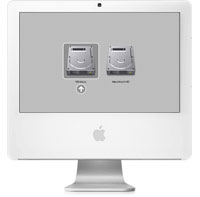 After hackers successfully managed to get an Intel-powered Mac running Windows XP operating system last month, Apple has come up with its own, simplified solution.
After hackers successfully managed to get an Intel-powered Mac running Windows XP operating system last month, Apple has come up with its own, simplified solution.
Now available as a 83 meg free beta download from Apple’s Website, the new Boot Camp application makes it possible for users with a Microsoft installation disc to install Windows XP on an Intel-based Mac.
Once loaded, Mac users simply have to hold down the option key at startup to choose between Mac OS X and Windows.
If they choose to run Windows, the Mac will run the OS natively, with just a restart needed to return terrified Mac users back to the Apple OS.
How it works
Intel Mac users must first ensure that they’re running the latest version of Mac OS X and that it’s loaded with the latest firmware updates.
After it’s been installed, the Boot Camp software then burns a CD containing drivers necessary for Windows to recognise Mac-specific hardware, before handholding users through the process of setting aside a section of the hard drive for the Windows installation.
The machine is then ready for the Windows installation disc (users will have to buy that separately) – the only tricky part here is manually making sure that XP installs on the Mac’s C drive (otherwie it might overwrite programs and files).
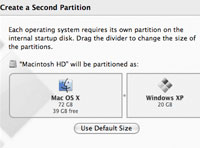 Once the installation process has done its thing and the Mac booted into Windows, users must then slam in their Drivers CD and sit back while it does it thing.
Once the installation process has done its thing and the Mac booted into Windows, users must then slam in their Drivers CD and sit back while it does it thing.
And then – bingo – Mac users are free to wander about in the wonderful world of Windows, with the comfort blanket of the Mac OS just a reboot away,
Release date
Boot Camp will be included in Apple’s next major Mac OSX release (Leopard) which will be previewed at Apple’s Worldwide Developer Conference in August.
“Apple has no desire or plan to sell or support Windows, but many customers have expressed their interest to run Windows on Apple’s superior hardware now that we use Intel processors,” explained Philip Schiller, Apple’s senior vice president of Worldwide Product Marketing.
“We think Boot Camp makes the Mac even more appealing to Windows users considering making the switch,” he added.
More information can be found at www.apple.com/macosx/bootcamp
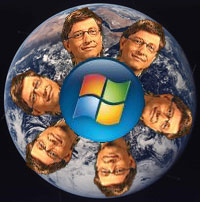 Two new studies into branding have produced two very different results, with a UK study declaring Microsoft the strongest brand in the known universe, while research in the US saw consumers slapping Microsoft down to near-bottom of their ‘most trusted’ list.
Two new studies into branding have produced two very different results, with a UK study declaring Microsoft the strongest brand in the known universe, while research in the US saw consumers slapping Microsoft down to near-bottom of their ‘most trusted’ list.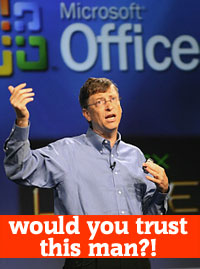 Bose, Dell, and Apple Score High On Trust
Bose, Dell, and Apple Score High On Trust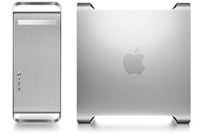 “Now that Macs have PC chips in them, they can run PC software.” Obvious, isn’t it. Except that someone recently managed to make the new Intel-based Mac run PC software, and it’s a big, big surprise, and it’s something many said would never happen.
“Now that Macs have PC chips in them, they can run PC software.” Obvious, isn’t it. Except that someone recently managed to make the new Intel-based Mac run PC software, and it’s a big, big surprise, and it’s something many said would never happen.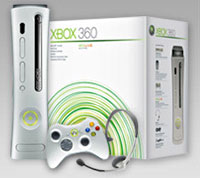 Microsoft appear to be trying the doors of the lucrative movie download business for the Xbox360 with the announcement of a video content deal with music label Epic Records.
Microsoft appear to be trying the doors of the lucrative movie download business for the Xbox360 with the announcement of a video content deal with music label Epic Records.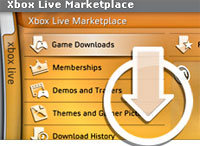 Videos and “exclusive artist content” will also be made available for download from the Xbox site.
Videos and “exclusive artist content” will also be made available for download from the Xbox site.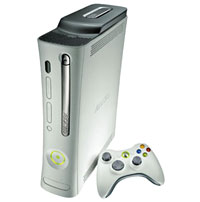 Epic has already dished out music videos for the Xbox 360 from the likes of Franz Ferdinand and Audioslave, and their catalogue also includes acts like Shakira, Matisyahu, Jennifer Lopez and Antipodean dandruff shakers, AC/DC.
Epic has already dished out music videos for the Xbox 360 from the likes of Franz Ferdinand and Audioslave, and their catalogue also includes acts like Shakira, Matisyahu, Jennifer Lopez and Antipodean dandruff shakers, AC/DC.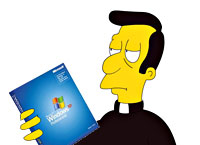 Microsoft is to release a suite of free parental controls and other safety measures designed to safeguard children on the Internet.
Microsoft is to release a suite of free parental controls and other safety measures designed to safeguard children on the Internet.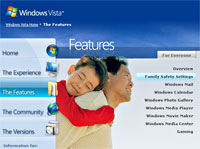 Kids definitely won’t like this, but the software also lets parents access their activity reports to check what they’ve been up to online.
Kids definitely won’t like this, but the software also lets parents access their activity reports to check what they’ve been up to online. Family Safety Settings will be available for any PC running Windows XP with Service Pack 2 as well as the upcoming Windows Vista operating system.
Family Safety Settings will be available for any PC running Windows XP with Service Pack 2 as well as the upcoming Windows Vista operating system.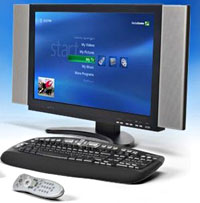 A new report by analyst firm Current Analysis claims that consumers are warming to Media Center PCs, with the entertainment-focused PCs grabbing eight per cent of the US retail market in January 2005, soaring 48 per cent in December.
A new report by analyst firm Current Analysis claims that consumers are warming to Media Center PCs, with the entertainment-focused PCs grabbing eight per cent of the US retail market in January 2005, soaring 48 per cent in December.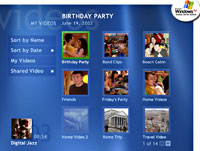 However, tuner-toting Media PCs are already making a comeback, with the market share for TV tuner-equipped systems climbing from 8.7 per cent in October to 12.8 per cent last month.
However, tuner-toting Media PCs are already making a comeback, with the market share for TV tuner-equipped systems climbing from 8.7 per cent in October to 12.8 per cent last month.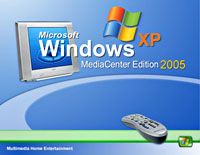 “The upward TV tuner-clad trend is a small victory for Media Center with regard to the digital home,” she said, adding that the TV arena is a “pivotal turf in the war for the digital home because it offers the most opportunities for lucrative infrastructure and broadcast content.”
“The upward TV tuner-clad trend is a small victory for Media Center with regard to the digital home,” she said, adding that the TV arena is a “pivotal turf in the war for the digital home because it offers the most opportunities for lucrative infrastructure and broadcast content.”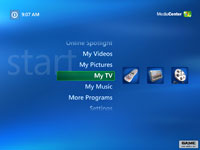 Microsoft first rolled out their Media Center Edition back in October 2002, but consumers have been sniffy because users weren’t inclined to buy the more expensive hardware needed to run the software – neither did the idea of watching TV on a clunky computer monitor seem particularly thrilling.
Microsoft first rolled out their Media Center Edition back in October 2002, but consumers have been sniffy because users weren’t inclined to buy the more expensive hardware needed to run the software – neither did the idea of watching TV on a clunky computer monitor seem particularly thrilling. On balance, the world is probably a better place with Microsoft, than it would be if Bill Gates hadn’t succeeded. But this week, the company is trying to get us to admit something different: that it is an innovative presence in the world, encouraging innovation in others. Specifically, it is running the Imagine Cup, and this week, in the UK, it’s judging 50 students who have entered a programming competition.
On balance, the world is probably a better place with Microsoft, than it would be if Bill Gates hadn’t succeeded. But this week, the company is trying to get us to admit something different: that it is an innovative presence in the world, encouraging innovation in others. Specifically, it is running the Imagine Cup, and this week, in the UK, it’s judging 50 students who have entered a programming competition. The content is fine! It goes on fairly meaninglessly with an animated techno-rabbit running around and flying; and then launches the theme.
The content is fine! It goes on fairly meaninglessly with an animated techno-rabbit running around and flying; and then launches the theme. So naturally, I asked MS why. I got their local expert, and asked: “Why on earth would you copy-protect a promotional video? Surely, the idea is that people mail it around, and it generates viral marketing traction, like the
So naturally, I asked MS why. I got their local expert, and asked: “Why on earth would you copy-protect a promotional video? Surely, the idea is that people mail it around, and it generates viral marketing traction, like the  As excuses go, that is such clear nonsense that I didn’t know what to say. If you have a modem link, you certainly can’t stream a WMV file. I couldn’t stream it with a 10megabit Telewest cable modem! And in any case, both the clips on that page are short! – one is two minutes, and that’s the long one. The other is 30 seconds.
As excuses go, that is such clear nonsense that I didn’t know what to say. If you have a modem link, you certainly can’t stream a WMV file. I couldn’t stream it with a 10megabit Telewest cable modem! And in any case, both the clips on that page are short! – one is two minutes, and that’s the long one. The other is 30 seconds. Microsoft has unveiled the official line up of the Windows Vista packages, with no less than six versions being available, all in 32 and 64-bit flavours.
Microsoft has unveiled the official line up of the Windows Vista packages, with no less than six versions being available, all in 32 and 64-bit flavours. All versions of the new OS will come with Internet Explorer 7.0, Vista desktop search, parental controls and Windows Defender anti-spyware technology.
All versions of the new OS will come with Internet Explorer 7.0, Vista desktop search, parental controls and Windows Defender anti-spyware technology.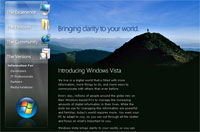 The super-slick redesigned Windows Aero GIO promises to provide a ‘transparent glass’ design, with subtle effects such as dynamic reflections and smooth animations, along with Windows Flip and Flip 3D desktop navigation features.
The super-slick redesigned Windows Aero GIO promises to provide a ‘transparent glass’ design, with subtle effects such as dynamic reflections and smooth animations, along with Windows Flip and Flip 3D desktop navigation features.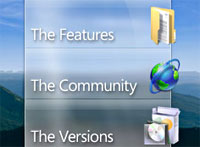 All versions of Windows Vista are scheduled to be broadly available in the second half of 2006, with pricing to be announced.
All versions of Windows Vista are scheduled to be broadly available in the second half of 2006, with pricing to be announced.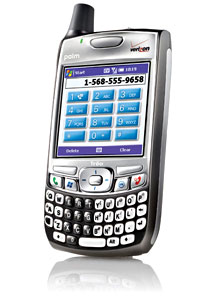 It’s been spluttering and wheezing in its sick bed for what seems like an eternity, but the latest figures from research firm IDC confirm that the prognosis isn’t good for the Personal Digital Assistant (PDA).
It’s been spluttering and wheezing in its sick bed for what seems like an eternity, but the latest figures from research firm IDC confirm that the prognosis isn’t good for the Personal Digital Assistant (PDA).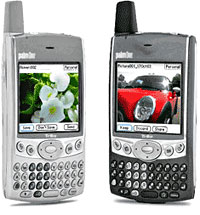 Although a bright Christmas period saw sales grow 37.6% over Q3, the trend remains resolutely downward, with the declining market segment driving PDAs into a market niche.
Although a bright Christmas period saw sales grow 37.6% over Q3, the trend remains resolutely downward, with the declining market segment driving PDAs into a market niche.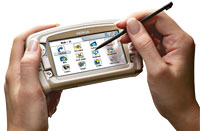 But don’t go ordering flowers for the PDA funeral quite yet, as IDC research analyst Ramon Llamas insists that it’s not all over for the PDA market, with plenty of smaller vendors remaining committed to a more niche PDA market.
But don’t go ordering flowers for the PDA funeral quite yet, as IDC research analyst Ramon Llamas insists that it’s not all over for the PDA market, with plenty of smaller vendors remaining committed to a more niche PDA market.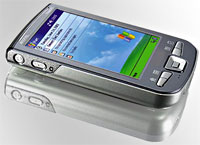 With Palm winding down its PDA business and concentrating on its Treo smartphone range, Nelson argues that Palm will have difficulty competing against deep-pocketed rivals like Dell and HP who are currently ploughing big R&D budgets into similar products.
With Palm winding down its PDA business and concentrating on its Treo smartphone range, Nelson argues that Palm will have difficulty competing against deep-pocketed rivals like Dell and HP who are currently ploughing big R&D budgets into similar products.